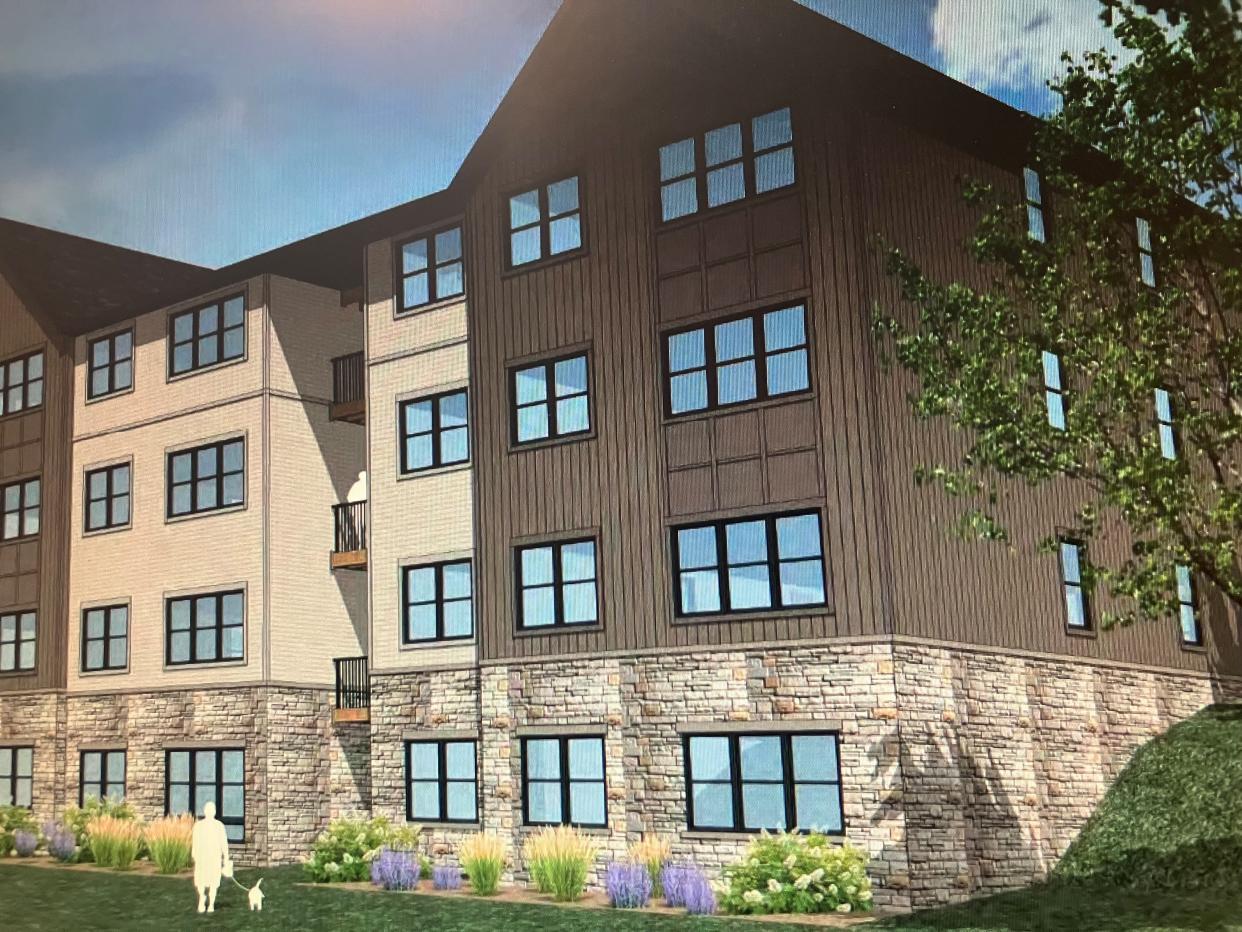Licking County housing needs to grow up in populated areas, not out, study director says

NEWARK − New housing in Licking County should grow vertically in populated areas, instead of spreading out into rural areas, according to Matt Hill, the Licking County Area Transportation Study technical study director.
Hill's comments came at Thursday's second Licking County infrastructure luncheon at the Reese Center on the Newark campus of Ohio State University and Central Ohio Technical College.
Populated areas already have all the services new residents need, unlike rural areas, he said.
“When you go rural, there’s no water,” Hill said. “There’s no sewer. We’ll have to put the people closer to downtown. The water is already there. The sewer is already there. The streets are already there. The transit is already there. The sidewalks are already there. The only thing missing is the place where people live.”
Licking County experienced 28% job growth since 2017. That growth is expected to continue with Intel Corp. beginning production of computer chips at a $28 billion development just south of Johnstown in 2027 or 2028. Other manufacturers, some Intel suppliers, have already come to the county or plan to build here.
In the next 10 years, Licking County will likely need to add about 7,000 households, and by 2050 the need is about 11,000 additional households to supply the workforce.
“Are we going to be able to continue doing that at 4 acres per household between Newark, Heath, Granville and the Franklin County line,” Hill asked. “Are we going to run miles of water?
“Or, are we going to put 10-story condo towers in the downtowns of Newark and Heath. Of course, Heath’s already talking about multi-family. That’s good. We don’t have to convince them.”
Jim Gates, deputy planning director for the Ohio Department of Transportation, told the infrastructure luncheon crowd about problems for homebuilders in Tuscarawas County, northeast of Licking County, between Canton and Cambridge.
“They said we don’t have the ability to move people here because for our developers to break even on a project, they need to charge $400,000 for a house because they have to run that infrastructure out there,” Gates said.
“In New Philadelphia, the price point for a house is like is $175,000, so that community is really struggling with — to get people to live there, it’s going to cost a ton of money.”
Hill said respondents to a recent Licking County study said they want to spend less time in their vehicles and want more modes of transportation available to them.
“The days of driving 40 miles one way to work, that’s changed,” Hill said. “When people say they want to spend less time in their vehicles and want more options, that means we have to change where they’re living, how they’re living. This is going to be painful for a lot of people.”
In response to an audience question about whether existing water and sewer capacity can support needed housing growth, Hill answered, “If we keep putting housing out in the middle of nowhere, do we have the capacity? No.
“If we want to shorten people’s trips to work and take more vehicles off the road, can we keep putting housing in the middle of nowhere? No. We’re going to have to focus on putting people closer to the downtowns, where they can walk and bike and transit and all that.”
Licking County Transit provided 14,000 passenger trips during the first five or six months of the year, Hill said, with 8,400 on the Main Street route, 4,100 on the 21st Street route and 1,500 on the new Granville route.
Gates said by 2055, the Licking County population will increase up to 30% and Ohio 37 will carry 5,000 more vehicles per day.
“We’re going to have to change things a little,” Gates said. “But there’s some hope in that. There’s the opportunity to recreate communities. There’s an opportunity to create a quality of life.”
Gates quoted Canadian author Robin Sharma, who said, “Change is hardest at the beginning, messiest at the middle and best at the end.”
740-973-4539
Twitter: @kmallett1958
This article originally appeared on Newark Advocate: LCATS director: Housing in Licking County should grow up, not out

